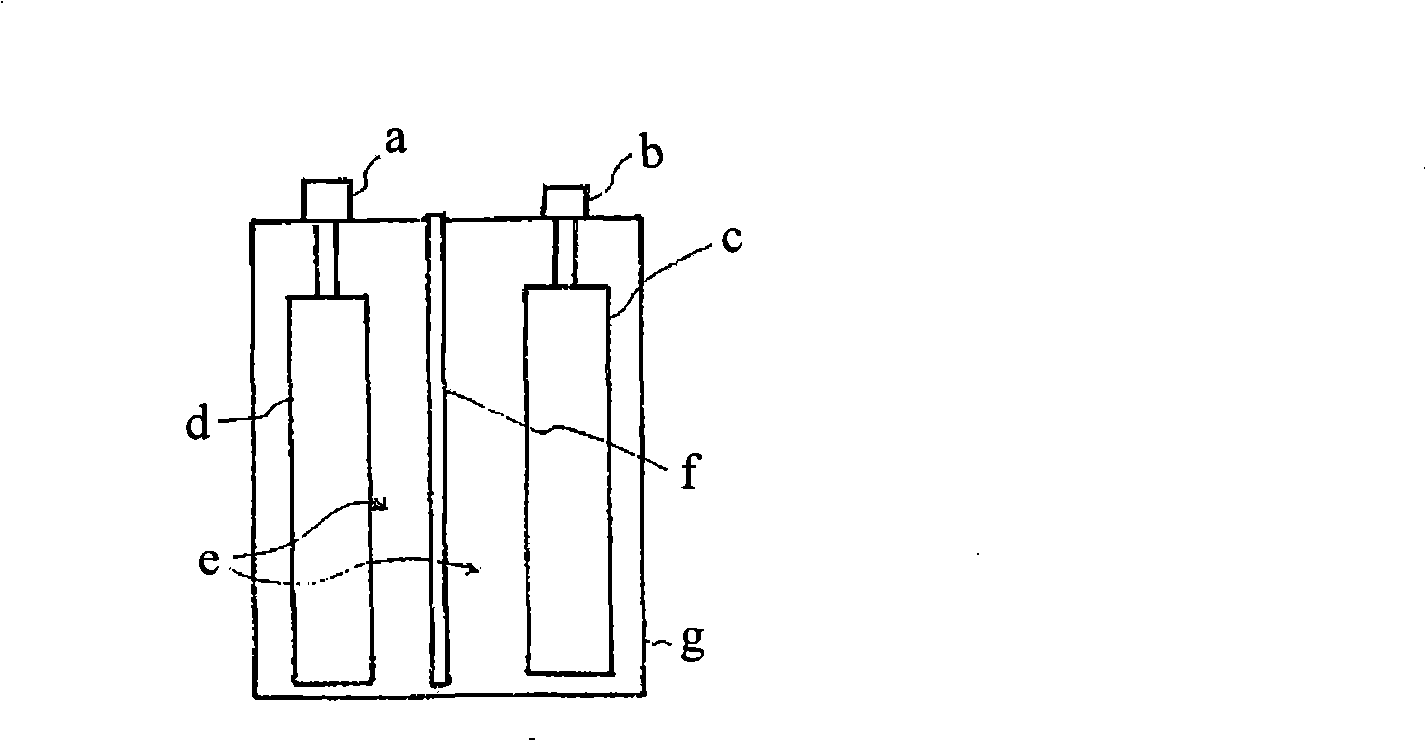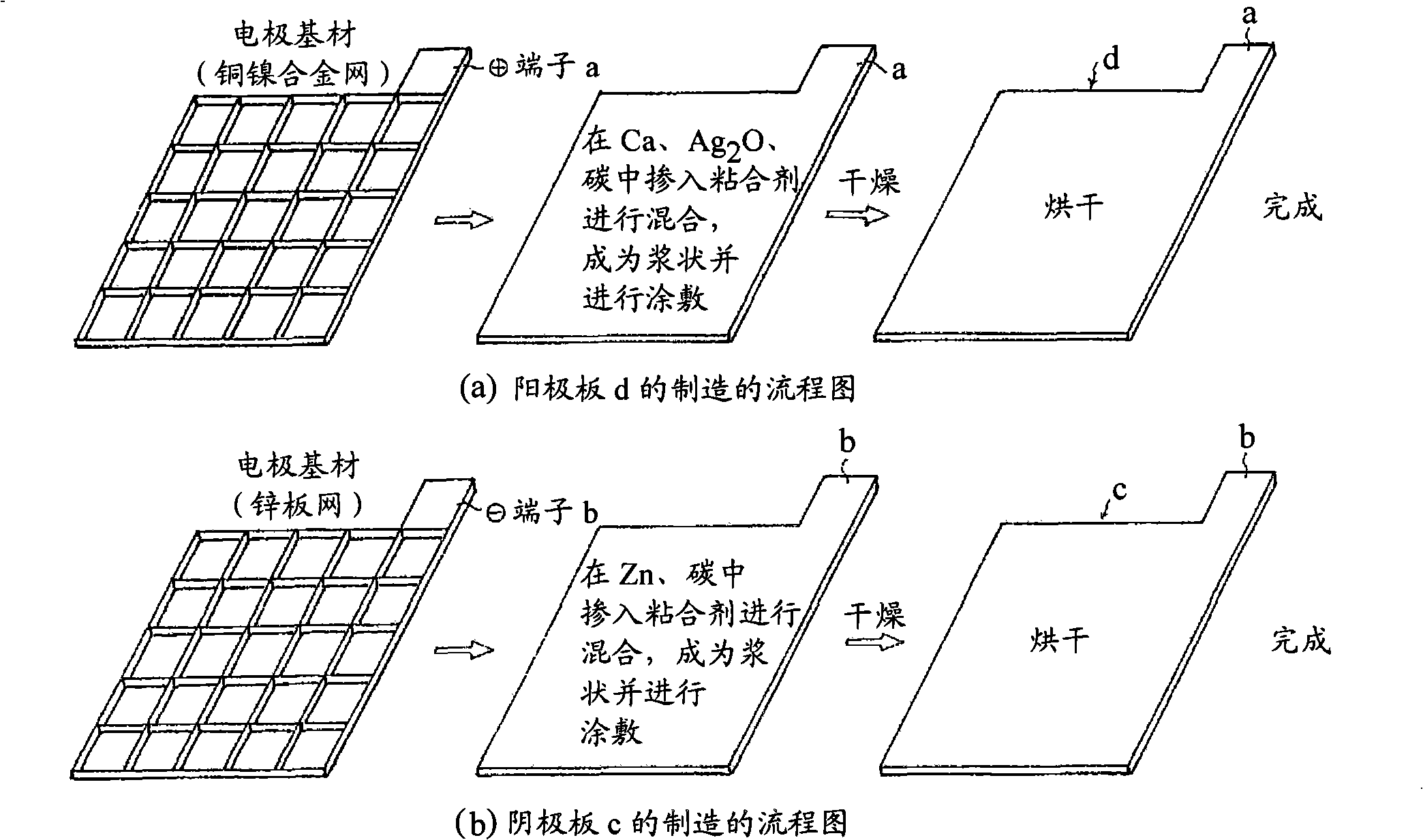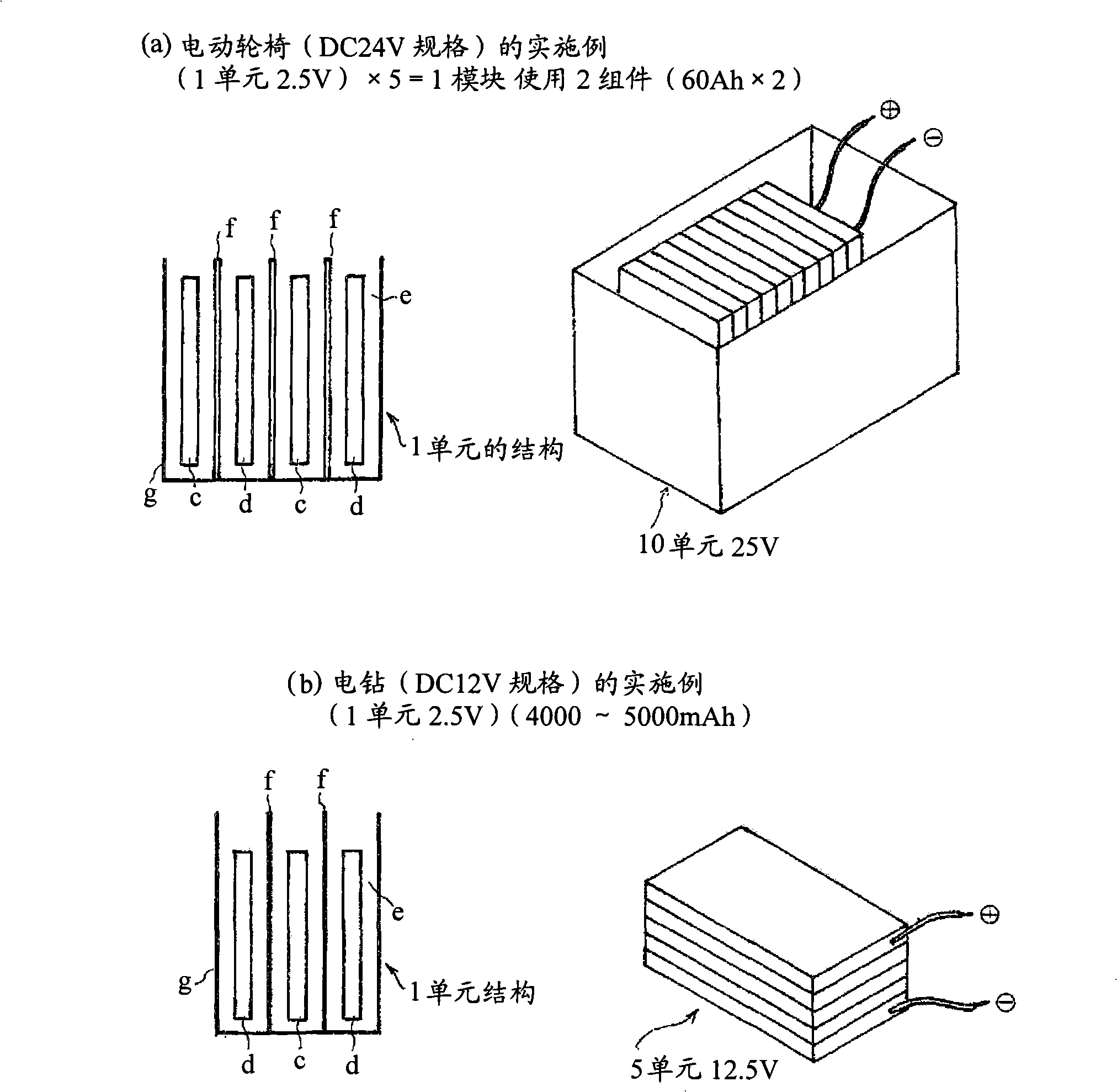Lead-free battery and vehicle system using the same
A lead-free battery and vehicle system technology, applied in the field of vehicle systems, can solve the problems of inconvenient vehicle systems, low cycle life, and low energy capacity, and achieve the effects of easy vehicle disposal, simple internal structure, and simple maintenance mechanism
- Summary
- Abstract
- Description
- Claims
- Application Information
AI Technical Summary
Problems solved by technology
Method used
Image
Examples
Embodiment Construction
[0098] Embodiments of the lead-free battery of the present invention will be specifically described below with reference to the accompanying drawings.
[0099] figure 1 is a diagram of the internal structure of the lead-free battery for each unit. Here, a and b represent an anode terminal and a cathode terminal, respectively. c and d represent the cathode plate and the anode plate respectively, and e represents the alkaline aqueous solution. f represents a separator which selectively passes through hydroxide ions, and g represents their shells.
[0100] figure 2 express figure 1 The structure of the cathode plate c and the anode plate d of the lead-free battery, (a) is the manufacturing flow chart of the anode plate d, (b) is the manufacturing flow chart of the cathode plate c.
[0101] The anode plate d is an electrode substrate produced by meshing a copper-nickel alloy plate as an initial electrode base material. A + terminal a is preset on one end.
[0102] Next, in...
PUM
 Login to View More
Login to View More Abstract
Description
Claims
Application Information
 Login to View More
Login to View More - R&D
- Intellectual Property
- Life Sciences
- Materials
- Tech Scout
- Unparalleled Data Quality
- Higher Quality Content
- 60% Fewer Hallucinations
Browse by: Latest US Patents, China's latest patents, Technical Efficacy Thesaurus, Application Domain, Technology Topic, Popular Technical Reports.
© 2025 PatSnap. All rights reserved.Legal|Privacy policy|Modern Slavery Act Transparency Statement|Sitemap|About US| Contact US: help@patsnap.com



